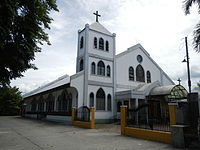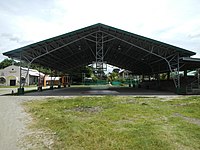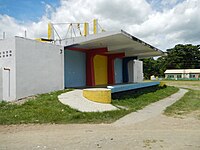
San Quintin, officially the Municipality of San Quintin, is a 3rd class municipality in the province of Pangasinan, Philippines. According to the 2020 census, it has a population of 33,980 people.

Dipaculao, officially the Municipality of Dipaculao, is a 3rd class municipality in the province of Aurora, Philippines. According to the 2020 census, it has a population of 33,131 people.

Anao, officially the Municipality of Anao, is a 5th class municipality in the province of Tarlac, Philippines. According to the 2020 census, it has a population of 12,208 people.

Gerona, officially the Municipality of Gerona, is a 1st class municipality in the province of Tarlac, Philippines. According to the 2020 census, it has a population of 94,485 people.

La Paz, officially the Municipality of La Paz, is a 2nd class municipality in the province of Tarlac, Philippines. According to the 2020 census, it has a population of 68,952 people.

Mayantoc, officially the Municipality of Mayantoc, is a 3rd class municipality in the province of Tarlac, Philippines. According to the 2020 census, it has a population of 32,597 people.

Moncada, officially the Municipality of Moncada, is a 1st class municipality in the province of Tarlac, Philippines. According to the 2020 census, it has a population of 62,819 people.

Paniqui, officially the Municipality of Paniqui, is a 1st class municipality in the province of Tarlac, Philippines. According to the 2020 census, it has a population of 103,003 people. It is the birthplace of the 11th President of the Philippines, Corazon Aquino.
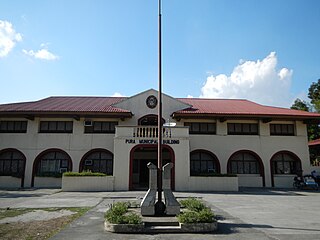
Pura, officially the Municipality of Pura, is a 4th class municipality in the province of Tarlac, Philippines. According to the 2020 census, it has a population of 25,781 people.
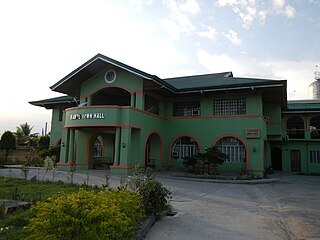
Ramos, officially the Municipality of Ramos, is a 5th class municipality in the province of Tarlac, Philippines. According to the 2020 census, it has a population of 22,879 people.

San Jose, officially the Municipality of San Jose, is a 3rd class municipality in the province of Tarlac, Philippines. According to the 2020 census, it has a population of 41,182 people.
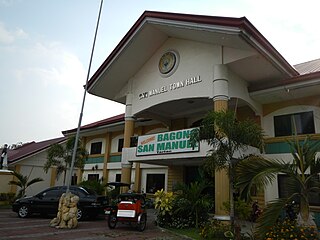
San Manuel, officially the Municipality of San Manuel, is a municipality in the province of Tarlac, Philippines. According to the 2020 census, it has a population of 28,387 people.

Santa Ignacia, officially the Municipality of Santa Ignacia, is a 2nd class municipality in the province of Tarlac, Philippines. Santa Ignacia has a total land area of 14,607 hectares. According to the 2020 census, it has a population of 51,626 people.

Tarlac City, officially the City of Tarlac, is a 1st class component city and capital of the province of Tarlac, Philippines. According to the 2020 census, it has a population of 385,398 people.

Victoria, officially the Municipality of Victoria, is a 2nd class municipality in the province of Tarlac, Philippines. According to the 2020 census, it has a population of 69,370 people.
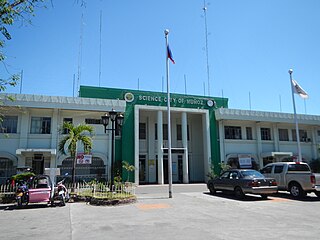
Muñoz, officially the Science City of Muñoz, is a 4th class component city in the province of Nueva Ecija, Philippines. According to the 2020 census, it has a population of 84,308 people.

Bongabon, officially the Municipality of Bongabon, is a 2nd class municipality in the province of Nueva Ecija, Philippines. According to the 2020 census, it has a population of 66,839 people.

Nampicuan, officially the Municipality of Nampicuan, is a 5th class municipality in the province of Nueva Ecija, Philippines. According to the 2020 census, it has a population of 14,471 people.

Quezon, officially the Municipality of Quezon, is a 4th class municipality in the province of Nueva Ecija, Philippines that was named from the 2nd president of the Philippines, Manuel L. Quezon. According to the 2020 census, it has a population of 41,845 people.

Talugtug, officially the Municipality of Talugtug, is a 4th class municipality in the province of Nueva Ecija, Philippines. According to the 2020 census, it has a population of 25,236 people.






